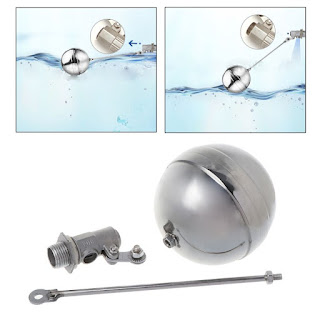How to Choose the Correct Size of Ball Float Valve for Your Water Tank
How to Choose the Correct Size of Ball Float Valve for Your Water Tank
If you have a water tank, you'll likely need a ball float valve to control the water level. However, with so many different sizes and types available, choosing the right one can be overwhelming. In this article, we'll discuss how to choose the correct size of ball float valve for your water tank.
Understanding Ball Float Valves
Before we delve into the different sizes of ball float valves, it's important to understand how they work. Ball float valves control the water level in your tank by opening and closing a valve as the water level rises and falls. As the water level drops, the valve opens to allow water into the tank, and as the water level rises, the valve closes to prevent overflow.
Measuring Your Tank
The first step in choosing the correct size of ball float valve is to measure your tank. You'll need to measure the diameter of your tank, as well as the height of the water level you want to maintain. With these measurements, you can determine the volume of your tank and the volume of water you need your ball float valve to handle.
Calculating the Valve Size
Once you have your tank measurements, you can calculate the correct size of ball float valve you need. A good rule of thumb is to choose a valve with a flow rate that is 1.5 to 2 times the volume of water you need to move. This ensures that the valve can handle the water flow without causing overflow or underflow.
Choosing the Type of Valve
There are several types of ball float valves available, including plastic and brass valves. Plastic valves are generally more affordable, but may not be as durable as brass valves. Brass valves are more expensive, but are more resistant to corrosion and can handle higher water pressures.
Factors to Consider
In addition to the size and type of valve, there are a few other factors to consider when choosing a ball float valve. These include the temperature of the water in your tank, the pressure of your water supply, and the material of your tank. It's important to choose a valve that can handle the specific conditions of your water tank.
Installation and Maintenance
Once you've chosen the correct size and type of ball float valve for your water tank, it's important to properly install and maintain the valve. Follow the manufacturer's instructions for installation, and regularly check the valve for any signs of wear or damage. Replace the valve if necessary to ensure proper water level control.
Conclusion
Choosing the correct size of ball float valve for your water tank can seem daunting, but with the right measurements and considerations, it's a straightforward process. By choosing the correct valve, you'll ensure proper water level control and avoid any issues with overflow or underflow.
FAQs
- What is a ball float valve? A ball float valve is a valve that controls the water level in a tank by opening and closing a valve as the water level rises and falls.
- How do I measure my water tank? To measure your water tank, you'll need to measure the diameter of your tank, as well as the height of the water level you want to maintain.
- What factors should I consider when choosing a ball float valve? Factors to consider when choosing a ball float valve include the size and type of valve, the temperature and pressure of the water in your tank, and the material of your tank.
- How do I properly install a ball float valve? To properly install a ball float valve, follow the manufacturer's instructions and ensure that the valve is securely attached to the tank.




Comments
Post a Comment